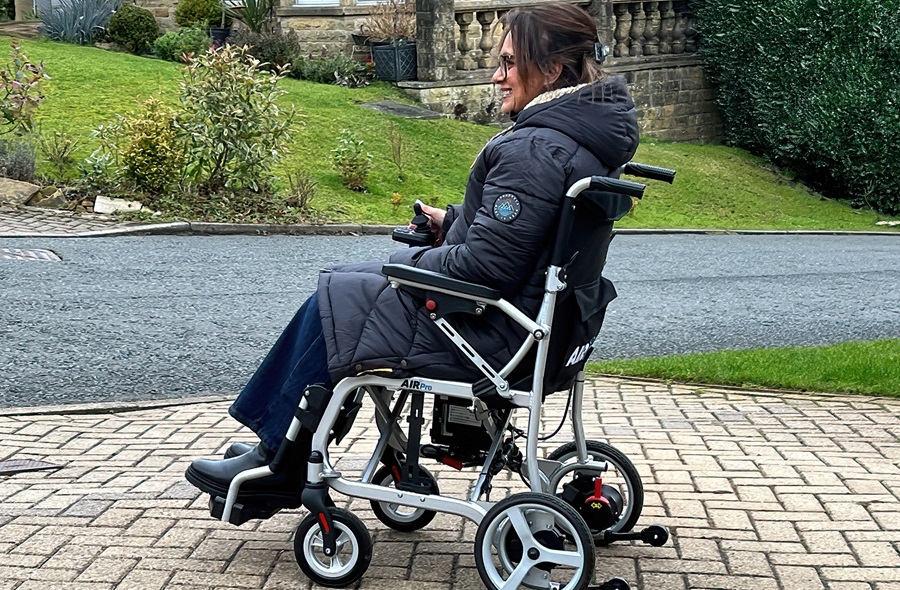
If you’re new to using a powered wheelchair – or even if you’ve had one for a while – it’s not always clear where you’re allowed to go. Are electric wheelchairs allowed on the road? What is a powered wheelchair maximum speed? Do different types of powerchairs have different rules?
Understanding the guidelines not only helps you stay safe but also ensures you use your electric powerchair legally and with confidence.
In this guide, we’ll explain the key rules for where and how you can use your powered wheelchair (also known as electric wheelchairs), along with practical tips for getting around safely on pavements, on the road, in shops, and when using public transport.
A Class 2 powerchair – or electric wheelchair – is a lightweight chair mobility aid designed primarily for use on pavements and pedestrian areas. It has a maximum speed of 4 mph and is not intended for road use.
Key rules for using a Class 2 powerchair:
Class 3 powerchairs are designed for use both on pavements and roads. To ensure the safety of yourself and others, there are specific rules that must be followed.
Key rules for using a Class 3 powerchair:
A powerchair that is ‘not in class’ is wider than 0.85 metres and weigh more than 150kg, and therefore doesn’t fall under Class 2 or Class 3.
Key rules for using a ‘not in class’ powerchair:
There are rules and regulations for driving an electric wheelchair on the pavement, designed to ensure safety for everyone. Keep these key points in mind when driving your powerchair on the pavement:
When driving your Class 3 or ‘not in class’ electric wheelchair on the road, it’s important to follow these rules and regulations to ensure your safety and the safety of others:
Visiting the shops is an essential part of daily life for many electric wheelchair users. While it can come with some challenges, these simple tips can help make your trips easier and more enjoyable:
Powered wheelchairs are usually welcome on public transport, but the rules can vary. For detailed advice on travelling by train, bus, or tube, check out our dedicated blog on accessibility and public transport tips.
The right powerchair can make a huge difference to your daily routine. And now that you have a clearer understanding of where powerchairs can be used, you’re even closer to greater freedom and independence!
If you are unsure which powerchair model is best for you, contact our friendly team at Monarch Mobility, who can talk you through the options or arrange a free demonstration.
